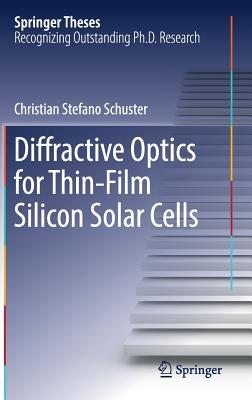

Most ebook files are in PDF format, so you can easily read them using various software such as Foxit Reader or directly on the Google Chrome browser.
Some ebook files are released by publishers in other formats such as .awz, .mobi, .epub, .fb2, etc. You may need to install specific software to read these formats on mobile/PC, such as Calibre.
Please read the tutorial at this link: https://ebookbell.com/faq
We offer FREE conversion to the popular formats you request; however, this may take some time. Therefore, right after payment, please email us, and we will try to provide the service as quickly as possible.
For some exceptional file formats or broken links (if any), please refrain from opening any disputes. Instead, email us first, and we will try to assist within a maximum of 6 hours.
EbookBell Team

0.0
0 reviews
ISBN 13: 9783319442778
Author: Christian Stefano Schuster
This thesis introduces a figure of merit for light trapping with photonic nanostructures and shows how different light trapping methods compare, irrespective of material, absorber thickness or type of nanostructure. It provides an overview of the essential aspects of light trapping, offering a solid basis for future designs. Light trapping with photonic nanostructures is a powerful method of increasing the absorption in thin film solar cells. Many light trapping methods have been studied, but to date there has been no comprehensive figure of merit to compare these different methods quantitatively. This comparison allows us to establish important design rules for highly performing structures; one such rule is the structuring of the absorber layer from both sides, for which the authors introduce a novel and simple layer-transfer technique. A closely related issue is the question of plasmonic vs. dielectric nanostructures; the authors present an experimental demonstration, aided by a detailed theoretical assessment, highlighting the importance of considering the multipass nature of light trapping in a thin film, which is an essential effect that has been neglected in previous work and which allows us to quantify the parasitic losses.
1 Introduction
1.1 Introduction
1.2 The Potential of Photovoltaics
1.3 Light Trapping for Thin Film Silicon Solar Cells
1.3.1 The NIR Problem
1.3.2 The Light-Trapping Potential
1.4 Scope and Outline of This Thesis
References
2 Nanostructures for Enhanced Light-Trapping in Thin-Film Silicon Solar Cells
2.1 Introduction
2.2 The Main Light-Trapping Approaches
2.2.1 Non-diffractive Techniques
2.2.2 Refractive Approaches
2.2.3 Diffractive Approaches
2.3 The Lambertian Scatterer
2.3.1 Absorption Enhancement by a Lambertian Backscatterer
2.3.2 The Maximum Absorption Enhancement
2.4 Assessment of Light-Trapping
2.4.1 How to Assess Light-Trapping Structures for Solar Cells ?
2.4.2 The Light-Trapping-Efficiency (LTE)
2.5 State of the Art
2.5.1 Important Milestones
2.5.2 The State of the Art
2.6 Concluding Remarks
2.6.1 Phase Engineering
2.6.2 Dual Structuring
2.6.3 Electrical Performance
References
3 Fabrication and Characterisation of Diffractive Nanostructures
3.1 Introduction
3.2 Nanolithography Techniques
3.2.1 Electron Beam Lithography
3.2.2 Nanoimprint Lithography
3.3 Pattern Transfer by Reactive Ion Etching (RIE)
3.3.1 Dry-Etching in the RIE-System
3.4 Absorption Measurements
3.4.1 Reference Measurement -- Thin Films
3.5 Summary
References
4 Achievements
4.1 Introduction
4.2 Dual Gratings by a Simple Layer Transfer Technique
4.2.1 Why Dual Gratings?
4.2.2 A Novel Layer-Transfer Technique
4.2.3 Proof of Principle Demonstration
4.3 Plasmonic and Diffractive Nanostructures
4.3.1 Methodology
4.3.2 Results
4.3.3 Discussion
4.3.4 Comparison of the Two Different Approaches
4.3.5 Conclusions
4.4 Summary
References
5 Conclusions and Outlook
5.1 General Conclusions and Remarks
5.1.1 Limitations and Future Work Left
5.1.2 Outlook
5.2 Can Solar Power Solve the World's Energy Crisis?
thin film solar cells vs crystalline
thinfilm solar cell
thin film vs silicon solar panels
thin film optics
advantages of thin film solar cells
thinfilm optics
thin film silicon